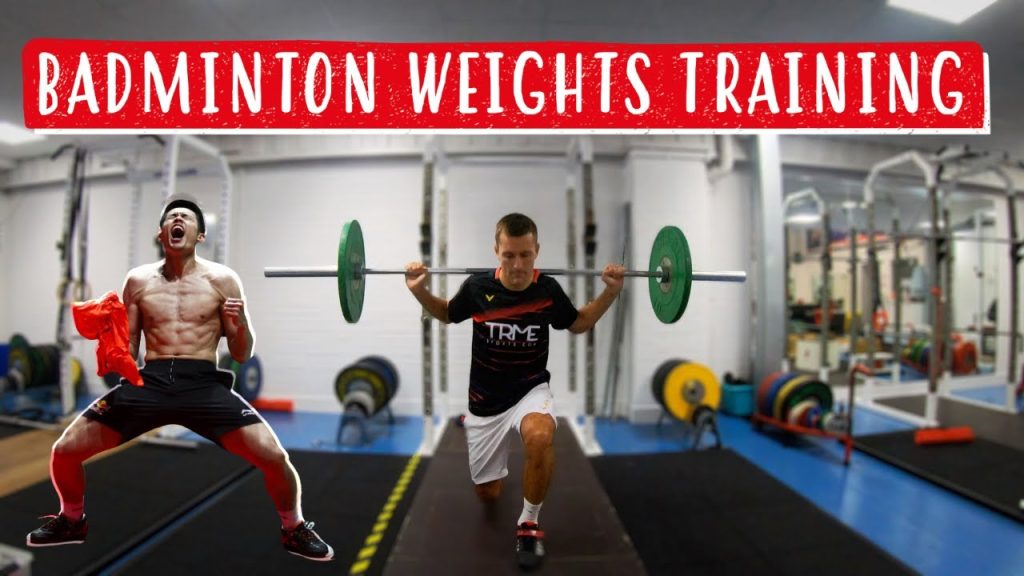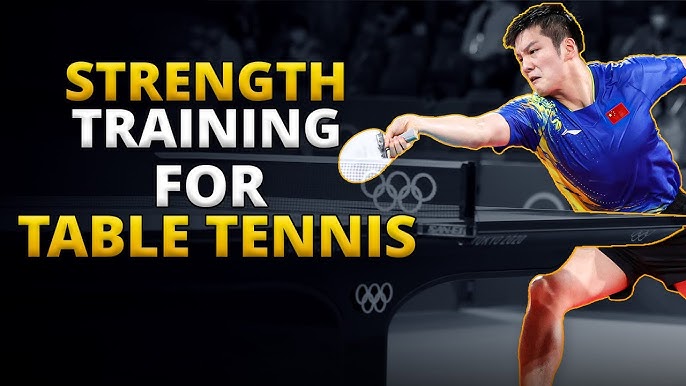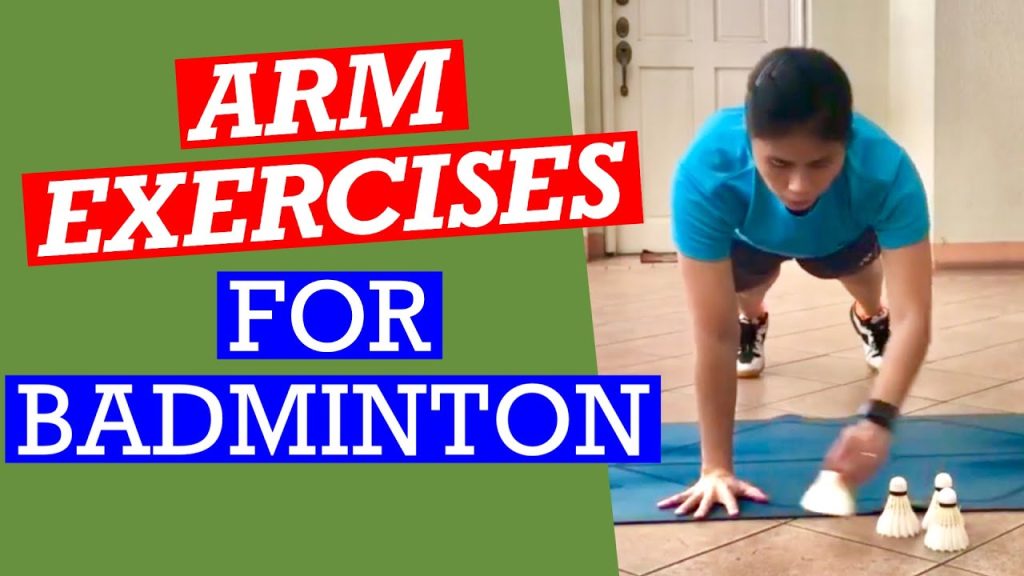Badminton players need specific strength training. It boosts performance on the court.
Strength training for badminton focuses on muscles used during play. This includes legs for powerful jumps and arms for strong shots. Unlike general workouts, these exercises target movements specific to badminton. Proper strength training can improve speed, agility, and endurance.
It also helps prevent injuries by strengthening joints and muscles. Understanding the right exercises is key. This guide will explore the best strength training techniques for badminton players. Get ready to enhance your game with focused, effective workouts.
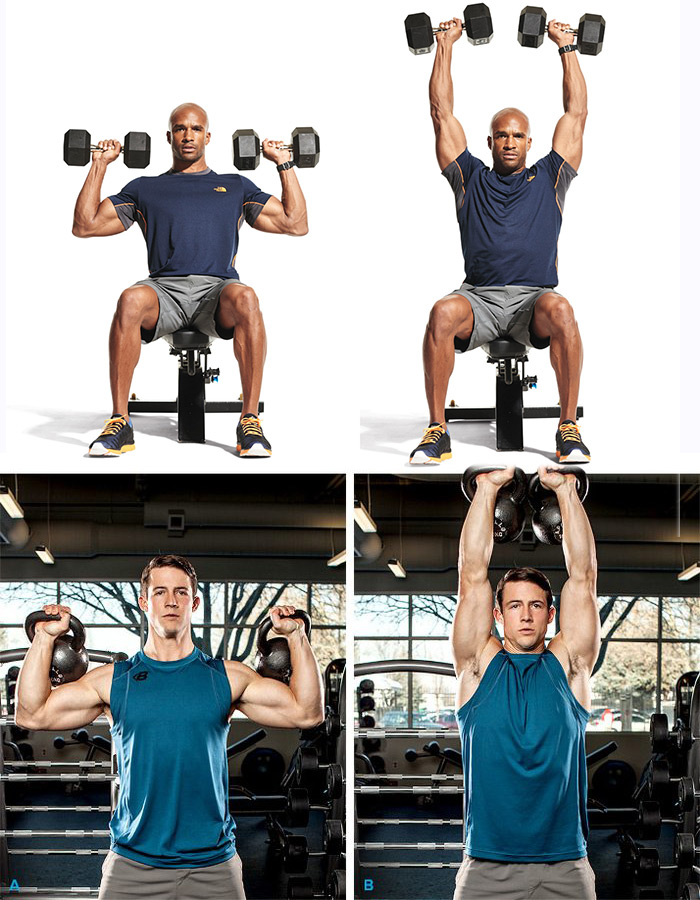
Credit: www.sportsuncle.com
Introduction To Badminton Strength Training
Badminton strength training is vital for players at all levels. It enhances performance and prevents injuries. This type of training focuses on developing muscles specific to badminton. Players need a combination of strength, speed, and endurance to excel in the game. Proper strength training can help improve these aspects.
Importance Of Strength Training
Strength training builds muscle power. It helps players hit harder and move faster. Strong muscles support joints and reduce the risk of injuries. In badminton, quick direction changes and rapid movements are common. A strong body handles these demands better. Without strength training, players may tire quickly and perform poorly.
Benefits For Badminton Players
Strength training offers many benefits. It improves overall fitness and stamina. Enhanced muscle strength boosts player agility and reaction time. Better endurance means players can sustain high performance for longer periods. Stronger muscles also aid in better balance and coordination. This is crucial for executing precise shots and quick footwork.
Strength training also enhances mental focus. It builds discipline and confidence. Players feel more prepared and capable on the court. Consistent training can lead to noticeable improvements in game performance. With a stronger body, players can enjoy the game more and achieve their goals.
Muscle Groups To Focus On
Badminton is a fast-paced sport that requires agility, strength, and endurance. Strength training tailored to badminton can help players enhance their performance and prevent injuries. Here are the muscle groups to focus on to get the most out of your training.
Leg Muscles
Leg muscles are crucial for quick movements and powerful jumps. The primary muscles to train include:
- Quadriceps: For strong and explosive jumps.
- Hamstrings: To balance the quadriceps and prevent injury.
- Calves: For quick footwork and stability.
- Glutes: Important for powerful movements and injury prevention.
Exercises like squats, lunges, and calf raises can help strengthen these muscles.
Core Muscles
A strong core provides stability and balance, which are essential in badminton. Focus on strengthening the following:
- Abdominals: Helps in maintaining balance and posture.
- Obliques: Important for twisting motions during play.
- Lower back: Supports the spine and improves overall stability.
Planks, Russian twists, and back extensions are effective core exercises.
Upper Body Muscles
Strong upper body muscles improve shot power and control. Key muscles to focus on include:
- Shoulders: Essential for overhead shots and serving.
- Biceps and Triceps: Important for racket control and power.
- Forearms: Vital for grip strength and racket handling.
- Chest: Supports upper body strength for powerful shots.
Push-ups, shoulder presses, and bicep curls are great for strengthening the upper body.
| Muscle Group | Key Muscles | Recommended Exercises |
|---|---|---|
| Leg Muscles | Quadriceps, Hamstrings, Calves, Glutes | Squats, Lunges, Calf Raises |
| Core Muscles | Abdominals, Obliques, Lower Back | Planks, Russian Twists, Back Extensions |
| Upper Body Muscles | Shoulders, Biceps, Triceps, Forearms, Chest | Push-ups, Shoulder Presses, Bicep Curls |
Warm-up Exercises
Warm-up exercises in badminton-specific strength training help improve agility and power. They prepare muscles for intense action and reduce injury risk.
Warm-up exercises are crucial in badminton-specific strength training. They prepare your body for the intense physical activity ahead. A good warm-up increases blood flow to your muscles. It also enhances flexibility and reduces the risk of injury.Dynamic Stretching
Dynamic stretching involves active movements that stretch your muscles. Arm swings are a great example. They loosen up the shoulders. Leg swings help stretch your hip muscles. Perform each movement for 30 seconds. Keep the motions smooth and controlled.Mobility Drills
Mobility drills improve your range of motion. They focus on joints and surrounding muscles. Try ankle circles to enhance ankle mobility. Hip circles help in loosening hip joints. Shoulder rolls are useful for the upper body. Perform each drill for 30 seconds. Warm-up exercises are key to a great badminton session. They make your training more effective.Leg Strength Exercises
Badminton demands quick movements and explosive power. To excel, players need strong legs. Leg strength exercises are crucial for enhancing performance and preventing injuries. Here are some effective exercises to build leg strength.
Squats
Squats are fundamental for leg strength. They target the quadriceps, hamstrings, and glutes. Here is how to do a proper squat:
- Stand with feet shoulder-width apart.
- Keep your chest up and back straight.
- Bend your knees and lower your body as if sitting back into a chair.
- Go down until your thighs are parallel to the ground.
- Push through your heels to return to the starting position.
Perform 3 sets of 12-15 reps. Squats help improve your stability and explosive power on the court.
Lunges
Lunges are excellent for balance and coordination. They work the quadriceps, hamstrings, and calves. Follow these steps to do lunges correctly:
- Stand tall with feet hip-width apart.
- Step forward with one leg, lowering your hips until both knees are bent at 90 degrees.
- Ensure your front knee is directly above your ankle.
- Push back to the starting position.
- Repeat with the other leg.
Perform 3 sets of 10-12 reps per leg. Lunges mimic the lunging movements in badminton, enhancing your agility and strength.
Calf Raises
Calf raises focus on strengthening the calves, essential for quick direction changes. Here’s how to perform calf raises:
- Stand with feet hip-width apart.
- Rise onto the balls of your feet, lifting your heels off the ground.
- Hold the position for a moment.
- Slowly lower your heels back to the ground.
Perform 3 sets of 15-20 reps. Strong calves help with explosive jumps and quick movements on the court.
Core Strength Exercises
Core strength is crucial for badminton players. It provides stability, balance, and power. Strong core muscles help in swift movements and quick changes of direction. Here are some effective core exercises that can enhance your badminton performance.
Planks
The plank is a great exercise for your core. It strengthens the muscles in your abdomen, back, and shoulders.
To perform a plank:
- Start in a push-up position.
- Keep your body in a straight line from head to heels.
- Hold this position for as long as you can.
Planks improve your stability and endurance. They help you stay strong during long matches.
Russian Twists
Russian twists work your obliques. They improve your rotational strength, which is important for powerful shots.
To do Russian twists:
- Sit on the floor with your knees bent.
- Lean back slightly and lift your feet off the ground.
- Hold a weight with both hands.
- Twist your torso to the right and then to the left.
Repeat for a set number of repetitions. Russian twists enhance your ability to make quick direction changes.
Leg Raises
Leg raises target the lower abdominal muscles. They are essential for a strong core.
To perform leg raises:
- Lie on your back with your legs straight.
- Place your hands under your hips for support.
- Lift your legs off the ground until they are vertical.
- Slowly lower them back down without touching the ground.
Leg raises help improve your lower body strength. This is crucial for explosive jumps and quick lateral movements.
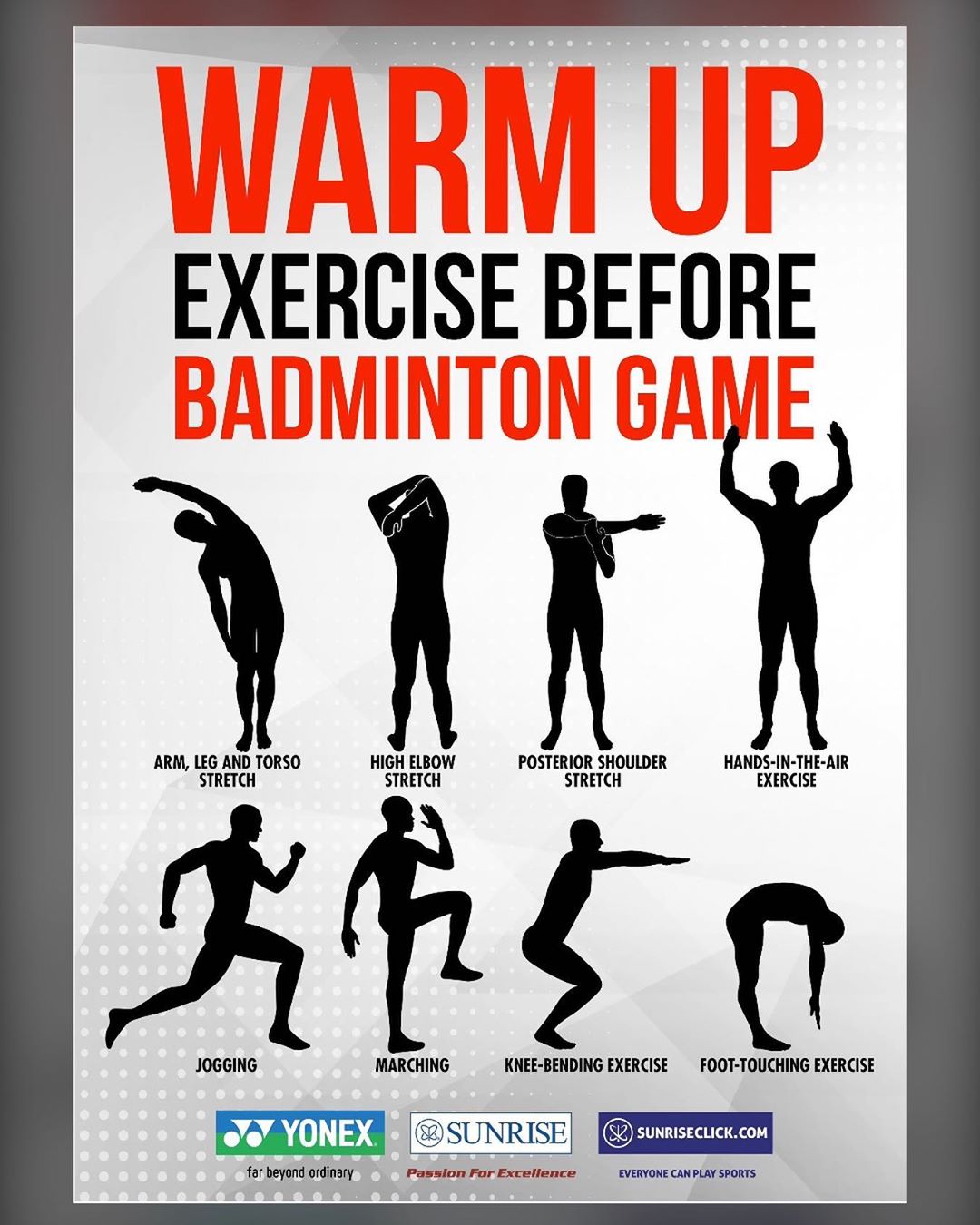
Credit: www.sportsuncle.com
Upper Body Strength Exercises
Upper body strength plays a crucial role in badminton performance. Strong arms, shoulders, and chest muscles help generate power for smashes, clears, and serves. Here are some essential upper body strength exercises for badminton players:
Push-ups
Push-ups are a fantastic exercise to strengthen the chest, shoulders, and triceps. They help improve your power and endurance on the court.
- Start in a plank position with hands shoulder-width apart.
- Lower your body until your chest almost touches the floor.
- Push back up to the starting position.
- Keep your body in a straight line throughout the exercise.
Try to perform 3 sets of 10-15 repetitions. Increase the number of reps as you get stronger.
Pull-ups
Pull-ups are excellent for developing back, shoulder, and arm strength. This exercise improves your ability to perform powerful overhead shots.
- Grab a pull-up bar with palms facing away from you.
- Hang with arms fully extended.
- Pull your body up until your chin is above the bar.
- Lower back down with control.
Begin with 2-3 sets of 5-10 pull-ups. Use a resistance band for assistance if needed.
Shoulder Press
The shoulder press builds strong and stable shoulders, which are essential for accurate shots.
- Sit or stand with a dumbbell in each hand.
- Start with the weights at shoulder height, palms facing forward.
- Press the weights overhead until your arms are fully extended.
- Lower the weights back to the starting position.
Aim for 3 sets of 8-12 repetitions. Use a weight that challenges you without compromising form.
Incorporating Plyometrics
Plyometrics are a crucial part of badminton-specific strength training. These exercises improve explosive power, agility, and endurance. They help players react quickly and move efficiently on the court. Incorporating plyometric exercises can enhance your overall performance. Below are some essential plyometric exercises for badminton players.
Box Jumps
Box jumps are excellent for building lower body strength. They enhance explosive power and improve jumping ability. Follow these steps:
- Stand in front of a sturdy box or platform.
- Bend your knees slightly and swing your arms back.
- Jump onto the box, landing softly on both feet.
- Step back down and repeat.
Start with a lower box and gradually increase height as you get stronger. Aim for 3 sets of 10-12 jumps.
Burpees
Burpees are a full-body exercise that boosts strength and endurance. They engage multiple muscle groups and improve cardiovascular fitness. Here’s how to do them:
- Start in a standing position.
- Drop into a squat and place your hands on the floor.
- Kick your feet back into a plank position.
- Perform a push-up.
- Jump your feet back to the squat position.
- Explode up into a jump.
Repeat this sequence for 3 sets of 8-10 reps. Maintain a steady pace to avoid injury.
Lateral Bounds
Lateral bounds are vital for improving agility and lateral movement. These are key skills in badminton. To perform lateral bounds:
- Stand on your right leg with your left leg slightly off the ground.
- Push off with your right foot, jumping to the left.
- Land softly on your left foot and balance.
- Repeat the movement, jumping back to the right.
Perform 3 sets of 12-15 bounds on each side. Focus on landing softly and maintaining balance.
Incorporating these plyometric exercises into your training routine can greatly benefit your badminton performance. They build strength, improve agility, and enhance explosive power. Remember to start slow and increase intensity gradually.
Recovery And Rest
Recovery and rest play a crucial role in badminton-specific strength training. They are essential for muscle repair and overall performance improvement. Without adequate recovery, muscles remain fatigued, leading to potential injuries and decreased performance.
Importance Of Recovery
Recovery allows muscles to heal and grow stronger. It reduces the risk of injuries by addressing muscle fatigue. Proper recovery ensures that your next training session is effective. It balances training intensity, preventing overtraining and burnout. This balance is key for long-term success in badminton.
Effective Rest Techniques
Quality sleep is vital for muscle repair and recovery. Aim for 7-9 hours of sleep each night. Include rest days in your training schedule. These days help muscles recover fully. Stretching exercises improve flexibility and reduce muscle stiffness. Light activities like walking can aid in active recovery, promoting blood flow.
Hydrate well to support muscle function and recovery. Proper nutrition provides the necessary nutrients for muscle repair. Consider massages or foam rolling to relieve muscle tension. These techniques enhance blood circulation and help in quicker recovery.
Creating A Training Plan
Badminton requires a unique blend of speed, agility, and strength. To perform well, players need a specific training plan. This plan should focus on building strength tailored to the needs of badminton. A well-structured plan helps players improve their game and avoid injuries. Below, we outline a training plan with key components.
Weekly Schedule
A weekly schedule helps in balancing training and rest. Here is an example:
| Day | Activity |
|---|---|
| Monday | Strength Training |
| Tuesday | Cardio and Agility Drills |
| Wednesday | Strength Training |
| Thursday | Rest or Light Activity |
| Friday | Strength Training |
| Saturday | Match Practice |
| Sunday | Rest |
Tracking Progress
Tracking progress is key to improving performance. Use a journal or app to record workouts. Note down:
- Exercises performed
- Weights used
- Repetitions and sets
- Duration of each session
- Any difficulties faced
Review your notes weekly. Look for patterns. Adjust your plan if needed. This helps in identifying strengths and weaknesses.
Remember, consistency is crucial. Stick to your plan. Track your progress. Improve your game.
Common Mistakes To Avoid
Badminton players often make common mistakes in their strength training routines. These errors can hinder progress and increase the risk of injury. By being aware of these mistakes, you can train smarter and achieve better results.
Overtraining
Overtraining is a common mistake in badminton strength training. Too much exercise without enough rest can lead to fatigue and injuries. It’s important to listen to your body. Take regular breaks. Allow muscles to recover and grow stronger.
Neglecting Flexibility
Many players focus only on strength and forget flexibility. This can reduce range of motion and increase injury risk. Stretch daily. Incorporate flexibility exercises into your routine. This will improve your overall performance.
Ignoring Nutrition
Proper nutrition is vital for strength training. Without it, muscles can’t recover properly. Eat balanced meals with protein, carbs, and fats. Stay hydrated. Consider talking to a nutritionist for a tailored diet plan. This ensures your body gets the nutrients it needs.

Credit: www.amazon.com
Frequently Asked Questions
What Is Badminton Specific Strength Training?
Badminton specific strength training focuses on exercises that enhance the muscles used in badminton. This improves performance and reduces injury risk.
Why Is Strength Training Important For Badminton?
Strength training boosts power, agility, and endurance. It helps players perform better and prevents injuries during matches.
How Often Should I Do Strength Training?
Aim for badminton strength training 2-3 times per week. This frequency allows recovery and muscle growth.
What Exercises Are Best For Badminton?
Focus on lunges, squats, and core exercises. These enhance agility, strength, and stability crucial for badminton.
Conclusion
Strength training in badminton boosts performance and prevents injuries. Focus on exercises that enhance agility, power, and endurance. Practice consistently and track progress. Your game will improve. Strength training can make a difference. Keep at it and see results. Remember, every effort counts.
Stay motivated and enjoy the journey.

